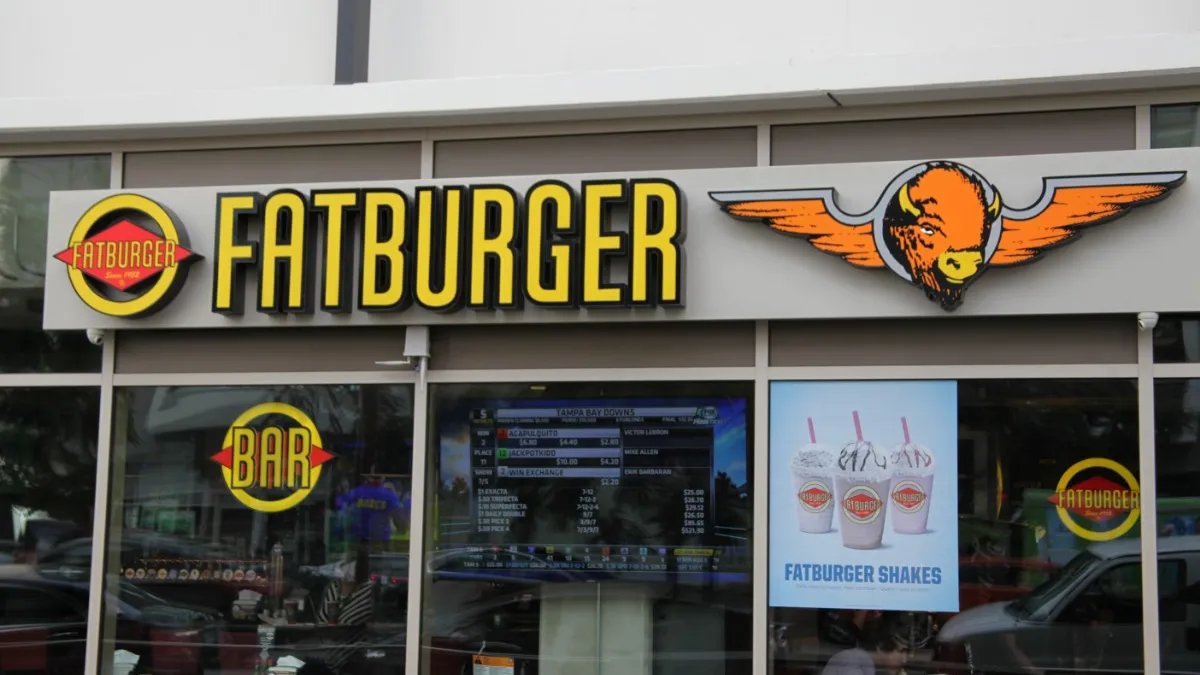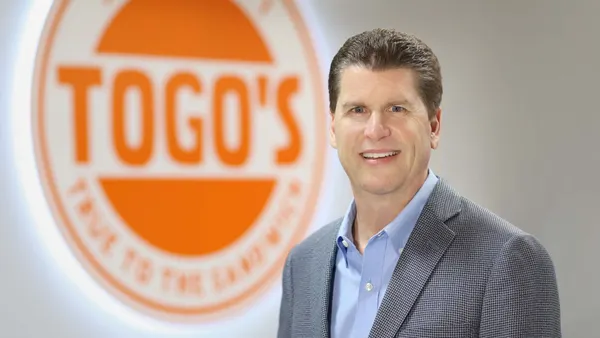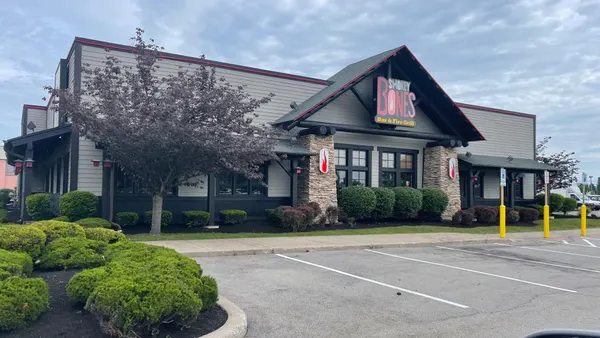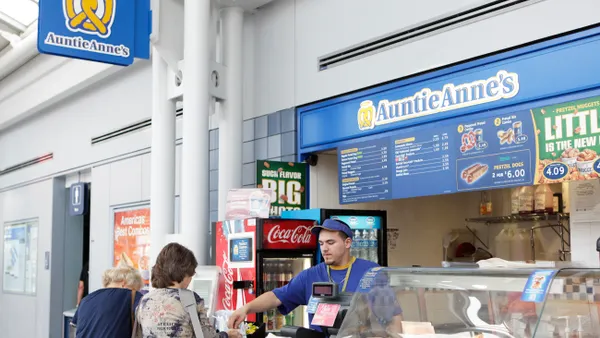As restaurants expand their reach and partner with franchisees, many are looking to increase value and sales without the challenge of finding new sites. For multi-brand restaurant companies, co-branding can solve this problem while boosting menu diversity, sales and differentiation from competitors.
“The co-branding, or the dual concept model, is exciting not only for economic reasons but also consumer convenience,” Jeff Crivello, CEO of BBQ Holdings, wrote in an email to Restaurant Dive. “Parent companies have always looked for synergies at the corporate level by marrying multiple brands, and it now makes sense to do the same at the restaurant level.”
By bolting on a brand to an existing restaurant location, operators can add more business without having to seek additional real estate.
“It’s attractive to landlords because they get diversity in their tenant mix when they have a co-brand,” Fat Brands CEO Andy Wiederhorn said. “Those are a primary focus within our existing franchisee base and the franchisees waiting to be developed.”
Fat Brands, which now hosts 17 restaurant brands under its platform, has been co-branding Fatburger and Buffalo’s Express since 2013 and operates over 100 such locations. This strategy yields roughly 20% higher average unit volumes compared to standard restaurants due to menu diversity, Wiederhorn said.
Now, Fat is hitting the gas on this strategy. The company announced the opening of its first Johnny Rockets and Hurricane Wings co-branded restaurant earlier this week, and more co-branded locations could be in the works via franchisees. Fat also has 1,000 units in its pipeline over the next five years, and co-branded restaurants could represent as much as half of that total depending on landlord approval, Wiederhorn said.
Fat plans to add Fatburgers to existing Round Table Pizza restaurants. Hot Dog on a Stick, which sells mostly hot dogs and lemonade, and Pretzelmaker could also be co-branded easily, he said. Fat has already co-branded 125 Marble Slab Creameries with Great American Cookies locations, and is converting its recently acquired Nestle Toll House Cafes to Great American Cookies. Nestle Toll House Cafes could also be eligible for co-branding if a franchisee chooses.
“We’re a global franchising company first and foremost and we want those franchisees to do everything they can to make money, and so we can give them additional brands to sell out of those locations where they already pay rent,” Wiederhorn said.

BBQ Holdings also sees franchising opportunities for co-branding following its acquisition by MTY Group in September. Now, BBQ Holdings franchisees can also operate MTY’s various brands, and vice versa, Crivello said.
The company’s dual-branded Granite City and Village Inn restaurant in Maple Grove, Minnesota, which opened in May, has been hitting all of its targets, Crivello said. BBQ Holdings is considering using shipping containers to add additional brands to parking lots of existing restaurants, such as adding a Cold Stone Creamery into a Famous Dave’s parking lot, he said. While the potential for sales increases depends on the scale of the brand that is being bolted on to an existing restaurant, if the two concepts are similar, it is not unreasonable to expect a 50% increase in sales, he said.
Co-branding’s potential to drive sales may draw other chains to the strategy, as well. Focus Brands has been opening co-branded drive-thrus with Auntie Anne’s and Jamba, and over a dozen new units are expected by spring 2023.
But co-branding opportunities aren’t limitless, even for Fat’s nearly 20 restaurant brands. While the company’s fast casual and QSR brands tend to work best for this model because of brand similarities, concepts like Twin Peaks — a sports bar with an already diverse menu and scratch kitchen — have less to gain from a bolt-on menu. Native Grill & Wings, which Fat bought nine months ago, may not get co-branded either, since Fat already has two other wing brands under its platform, Wiederhorn said.














